Made via DMLS, or direct metal laser sintering, the Radical Firearms Sinter suppressor is made from ~2,600 layers of sintered titanium to become one perfectly monolithic finished unit. The Sinter is a .30 caliber silencer rated for everything .300 WinMag on down, including full-auto use.
At an MSRP of $899 — less at Silencer Shop, which of course makes the suppressor buying experience as easy as legally possible — the Sinter comes with both a 5/8×24 and a 1/2×28 muzzle device.
Sort of a hybrid compensator, brake, flash hider, these muzzle devices feature a taper in front of the threads, which seals up against a matching taper inside the Sinter. This sort of tapered mating surface increases surface area over square shoulders, provides a little “squeeze” between the two parts, and reduces the chance of the suppressor coming loose during use.
By putting the taper in front of the threads, the threads are kept clean and clear of carbon buildup.
It takes just five full rotations to take the Sinter from removed to fully snug. It’s not as quick as some QD systems, but it’s faster and easier (due to the self-indexing and the course threads) than a direct thread silencer.
The DMLS process leaves a unique texture, as the individual layers of material are visible if you look closely. It’s especially visible anywhere with an angle (on the Sinter, that’s in the muzzle end, which is seen in a photo to follow).
In the case of the Radical Firearms Sinter titanium suppressor, a honeycomb pattern was designed into the 1.75-inch exterior diameter. Not only does it provide solid grip for installing and removing the Sinter, it increases surface area to aid in cooling.
Aside from creating a truly monolithic end product that typically has a more uniform grain structure than even a forged piece, the biggest advantage to DMLS manufacturing is the ability to create structures that could never be machined.
In the case of a suppressor this means internal gas pathways and complicated structures that would either be impossible to machine or cast or prohibitively expensive and complicated to make and/or assemble.
For the Sinter, this means four channels that vent gas and pressure directly from the blast chamber out the front of the suppressor. One of those channels is visible at approximately 7:30 in the photo above — it looks like a rectangular bar that runs longitudinally. What you can’t see if that it’s hollow and there’s a small port just inside the wall of the Sinter.
On the business end, the four small ports at the end of the internal tubes are clearly visible.
According to Radical Firearms, which tested the Sinter with and without these ports and with varying sizes and numbers of ports, this configuration significantly reduced backpressure and provided more sound reduction than without the ports. That’s another benefit of DMLS: it’s extremely easy to print a dozen prototypes, all of them slightly different from one another.
Out on the range I tested the Sinter on a 10-inch .308 Pork Sword Pistol, and it did great. Radical says the Sinter measures at 136.7 dB off to the side of the muzzle on a 12.5-inch .308, so at the shooter’s ear we should be “hearing safe” even on this 10-inch configuration.
Indeed, it was comfortable to the ears and came very close to matching the sound level of some of the nicest, best-performing suppressors on the market that I’ve shot on this same configuration.
Shooting subsonic .308, which is effectively identical to subsonic 300 Blackout, the Sinter was super quiet. The first and second rounds were a little louder, and then once the oxygen was purged from the suppressor it sounded like scarcely more than a loud pellet gun.
Over to a standard hunting rifle-length 6.5 Creedmoor, in this case Savage’s new Impulse straight pull, the Sinter sounded really great. It has a solid, low tone to it and tames the fairly loud 6.5 Creedmoor extremely well.
This sounds and feels totally comfortable for a day on the range — very much like simply taking your ear protection off of you and putting it on the gun.
At one pound of weight dead on, the Sinter’s mass is noticeable at the end of a 20-inch barrel but it isn’t cumbersome. For a titanium .30 cal suppressor in 2021 it’s a bit porky, but across all full-size .30 cal suppressors it would be considered lighter than the norm.
Thanks to the included 1/2×28 muzzle device I was able to quickly and easily move the Sinter over to an AR-15 chambered in 5.56. Thanks to the Sinter’s full-auto rating I was able to dump a magazine (or two) of .223 through it without breaking any rules.
On the AR I found the Sinter about as quiet and comfortable as any suppressor gets, with most of the annoying noise of shooting the gun coming from the action and gas system, not so much out the muzzle.
Looking at the video there appears to be slightly more gas coming out the ejection port than when the gun is unsuppressed, but only slightly. On the range I didn’t notice a difference. I do believe that port system, stripping gas and pressure directly from the blast chamber, has a meaningful effect on reducing backpressure (and Radical Firearms even developed a scientific testing system in-house to prove and quantify this).
Radical Firearms, located in the Houston, TX metro area, is working hard to bring advanced technology and high-end manufacturing in-house. I’ve seen them expand significantly over the past couple of years and continue to be impressed with the progress they’re making to put out increasingly high quality components and implement advanced process control and QC.
Keep an eye on these guys, because they’re going to become an increasingly legitimate player in the quality end of the market. The Sinter is a good example of modern technologies and solid design that we can expect to see.
For more information on the Radical Firearms Sinter titanium suppressor, check out Radical Firearms and Silencer Shop.
Specifications: Radical Firearms Sinter-762
Caliber: .30 Caliber (up to .300 WM)
Length: 8.0 inches
Weight: 16 ounces
Diameter: 1.75 inches
Materials: titanium (Ti-6Al-4v)
Finish: Cerakote C Series high-temp
Mount: one 5/8×24″ and one 1/2×28″ muzzle device
MSRP: $899 (less via Silencer Shop!)
Ratings (out of five stars):
Overall * * * *
Radical Firearm’s Sinter is an extremely strong performer and a very useful .30 cal suppressor with its generous cartridge and firing scheduling ratings and muzzle devices threaded for different guns. It’s a really great silencer. I’d give it five stars if it were 10 ounces instead of 16, but then again that may sacrifice durability and reduce the acceptable firing schedule. As an all-around suppressor to use on everything in your stable .30 cal and smaller, it’s a great choice.


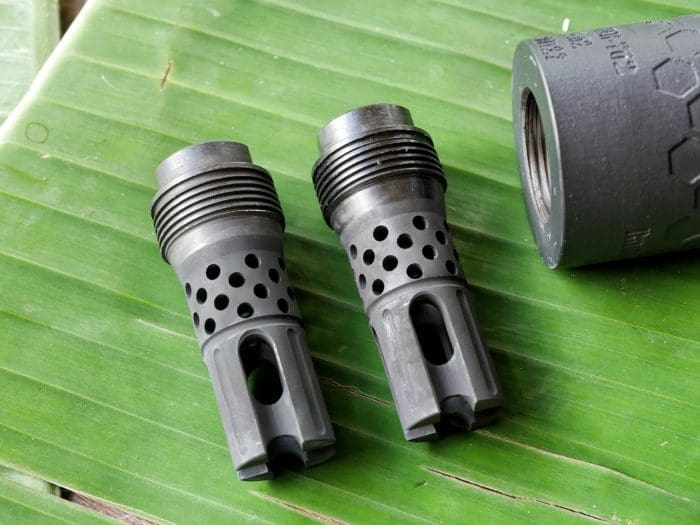
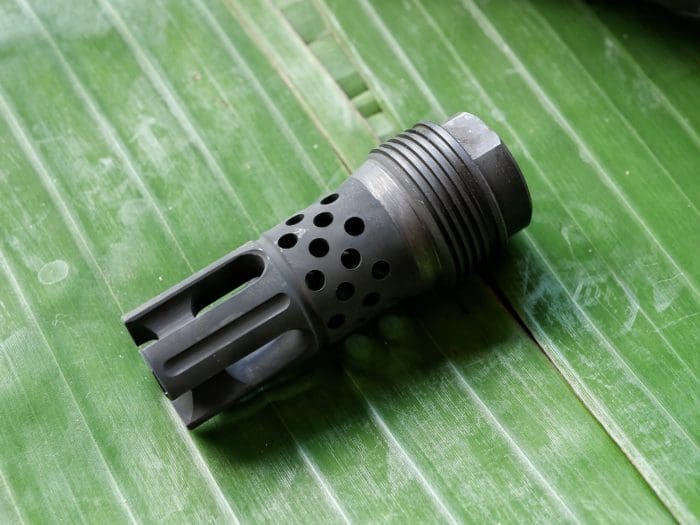


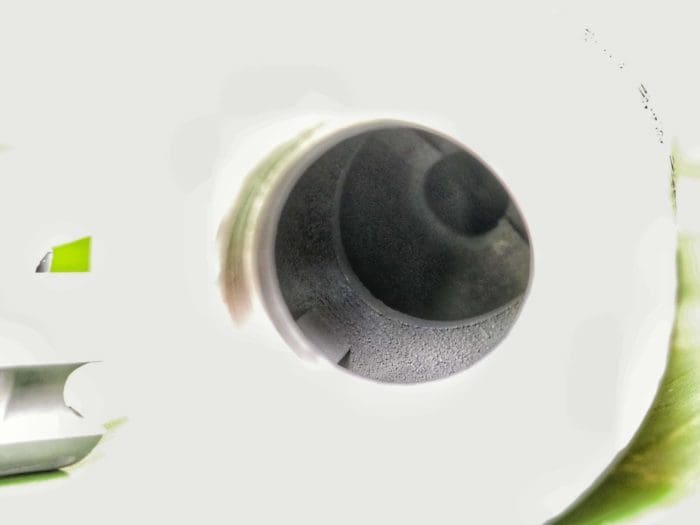
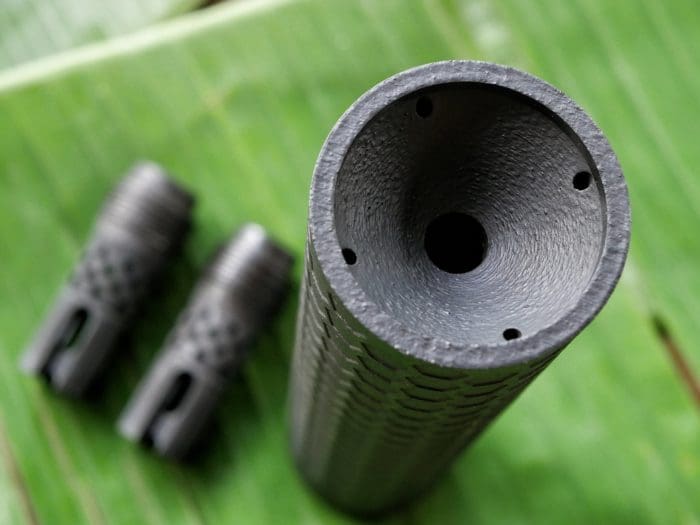

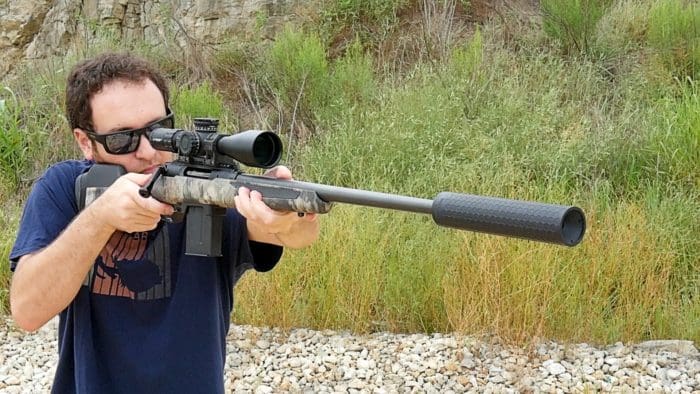
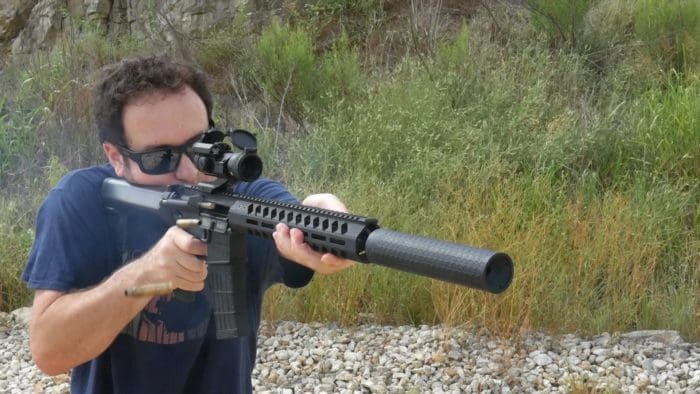

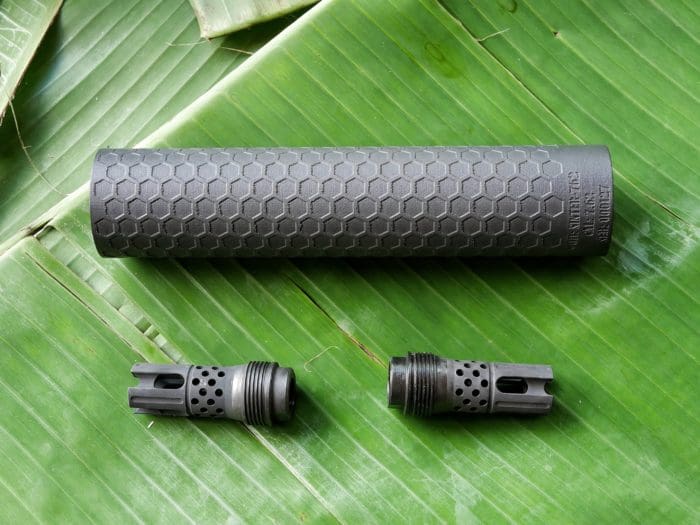



Nice review. I have read much about the toys in the ‘NFA party pool’ but have never dipped my toe in. So that said, with the Sinter being monolithic in design, what does one have to do to go about cleaning it?
You don’t clean rifle cans. The heat and pressure of centerfire rifle cartridges keeps them clean inside. If you were to run .22 LR or something dirty through this enough to cause buildup in there, firing .223 or .308 or 6.5 CM or any other centerfire rifle cartridge a few times will clean it right out. The vast, vast majority of rifle suppressors do not disassemble in any manner for cleaning.
All that said, there are solutions you can submerge the suppressor into that will dissolve copper, lead, etc. But you generally don’t get that kind of buildup firing supersonic rifle rounds.
Not having to clean rifle silencers is a myth that even some manufacturers still try to propagate for a few reasons, such as counting on customers not shooting more than a couple thousand rounds through it in their lifetime and not using coatings that can stand up to solvents and ultrasonic cleaning. Rifle silencer don’t “self clean”, it can take as little as 1,000rds through a rifle silencer to build up just 1oz of fouling. There is significant actual physical evidence proving rifle silencers don’t self clean. Heat and pressure don’t do anything to remove fouling, that’s a myth. If it did, then none of the examples below would be filled with fouling.
All you have to do is weigh the silencer when you get it and record its weight using a precision kitchen scale, because most manufacturer weights can’t be relied on and you don’t know what configuration of parts they weighed it as. Then every 1000-2000rds after that weigh it again and once it gains another ounce or two in weight then it’s time to clean. If you don’t clean it at that weight interval and continue to allow fouling to build up it becomes increasingly difficult to remove. Some Blackout can burn cleaner than other rounds though. It used to be manufacturers wrongly told people rimfire silencers don’t need to be cleaned, it used to be manufacturers wrongly told people handgun silencers didn’t need to be cleaned. The same revelation people had 10-15 years ago with rimfire and handgun silencers needs to happen with rifle silencers as well. That doesn’t mean they need to be completely disassembled into individual components though.
In a very simple visual, all you have to do is imagine 1/6th of the fouling being present, and that’s what just 2000rds of 7.62 would leave behind inside the silencer for #1-4:
1) https://i.imgur.com/UCZ5A63.png
2) https://i.imgur.com/OBp5PUZ.png
3) https://i.imgur.com/0nzhAXl.png
4) https://i.imgur.com/hD9jC5P.png
5) https://i.imgur.com/PIJkZ0f.jpg
6) https://www.instagram.com/p/B0b0DBVgDqB/
Build up being allowed to continue will lead to significantly decreased sound reduction performance, increased flash, increased weight, and in some extreme cases will lead to accuracy issues. #1-4 are just simple ported cone baffles like any common silencer you’ll find in the last century and then some. In the case of #5, it led to a 33% decrease in sound reduction capability as measured by single peak meter data. In the case of #6, that was just 12,800rds of Nexus 136gr Scenar L fired out of an 18″ AR10 as a torture test. Just imagine 1/6th of that fouling being present and you can easily see just like #1-4 it should’ve been cleaned prior to 2000rds. The Scenar L is complete copper jacketed, so no lead is exposed. That variant wasn’t internally coated with hexagonal boron nitride/S Line and if it was the fouling wouldn’t have been able to stick in the first place. Nearly all silencers you can buy aren’t internally coated and will foul up.
In a more extreme case: https://www.snipershide.com/shooting/threads/ultra-7-10-5oz-heavy-after-28k-rounds-of-6-5-cm.6960879/
The vast majority of centerfire rifle cans aren’t user serviceable (they are welded into a solid unit).
3D printing looks like the future of suppressor manufacturing.
Given the annoying NFA and the ATF’s (AFT) enforcement of it, how is damage and repair/replacement handled? And more specifically, what is Radical’s policy?
Oh look at the kitty, I mean lizard.
That’s an Anole, they are very common here in Florida.
Friendly little buggars, people love them down here since they love eating roaches.
Marsupials would love them as a tasty snack should one try and enter their burrow… 🙂
I wondered what kind it was. Thanx
I thought Snow Lizard?
No sir, that’s a Texas Spiny Lizard. It’s a more desert like and less tropical like, and has larger, spiky scales so is rough instead of smooth. They’re chubbier than anoles and don’t change color at all — always a mix of FDE and black haha. We have anoles here also, but that ain’t one of ’em 😉
I stand corrected.
Possum, Anoles I *think* were originally Cuban or Caribbean…
Thoughts compared to Hyperion?
Would be nice to see a cutaway or xray of this.
“Thoughts compared to Hyperion?”
I’m curious as well, since Jeremy (who may or may not have spoken in class again) wrote :
“For the Sinter, this means four channels that vent gas and pressure directly from the blast chamber out the front of the suppressor.”
Sounds like a version of CGS’s ‘Hyperion’. I have one inbound, and about to rest for months in NFA ‘jail’.
I’d really like to know if this was designed as competition to CGS’s pre-ported can…
It isn’t as quiet as the Hyperion, but then again the Hyperion’s the quietest can on the market so nothing is haha. The Sinter is a solid performer. The Sinter is heavier, and I believe a bit shorter? The Hyperion is much more complicated internally.
As for the gas channels, they’re fairly different in complexity and how they work. The Hyperion merges those channels back into the main gas flow like half way down, but they start up again after that and vent out the muzzle or the user can block those vents. With the Sinter I’m fairly sure they don’t join back in with the central gas flow and they just make a direct path out the front. There’s also a lot of other very interesting stuff happening inside the Hyperion like varying bore sizes in the baffles and more. Other then the four gas channels in the Sinter, the baffle design itself is honestly a bit old school. I was surprised by how well it performs after I saw a cutaway, but there’s no denying that it performs. Apparently it’s super insanely, weirdly quiet on 7.62×39 but I haven’t tested that myself.
Thanks! Ever tried any Thermal Defense Solutions cans?
For an advanced design using very advanced manufacturing, that’s an impressive price point.
I also want to know about cleaning.
So who is going to post open source file? (Small issue of available equipment but F ATF).
What he said.
You have a DMLS machine? I believe they run like $800k for a fairly middle of the road one.
I had to laugh how he, very purposely, avoided shouldering that pistol; must have a wife and dog he cares about. 😅
Yeah. Gotta model model behavior right now and do things as the [over]lord intended.
Since Jeremy is associated with the company, his documented use is evidence of how the gun was “designed or intended” to be used. BATFE could then rule Pork Swords are SBRs, not pistols, if the owner/designer always shoulders it.
The advantage of a forging is not uniformity, but directionality (like fiber alignment in composites engineering). The machine in the video is laying and sintering particles side-to-side (for convenience, like in a 3D plastic printer) which is not optimal for strength.
Oddly enough that’s not actually how the grain structure ends up aligned, and the finished product typically has a higher tensile strength and fewer material imperfections than if it were machined from a ‘billet’ of the same material.
“A unique characteristic of the laser-sintered titanium alloy is that it develops a typically dendritic, martensitic structure with grains growing perpendicularly from layer to layer. The grain structure is highly uniform (Figure 1B). This structure is created by the laser energy of each vector partially re-melting the previously solidified layer below and removing the existing layer boundary. The metal subsequently re-crystallizes, growing through the layers.”
That’s from: https://www.techbriefs.com/component/content/article/tb/pub/techbriefs/manufacturing-prototyping/2787
Interesting, and I did not know that.
It sounds like this aligns the crystalline structure in a fore-aft direction, while the optimal orientation would have most of the grain oriented helically around the pressure chamber. A suppressor is too short and fat to be subject to much “droop”, while it is relatively thin-walled for the high pressures involved.
I would like to know if the threaded mount in the suppressor conforms to the “industry standard” of 1.375″ so you can use other mounts.
https://www.recoilweb.com/the-universal-silencer-standard-1-375×24-156634.html
So I’m not that familiar with DLMS but how hard would it be to take the CAD file for this can, print it in wax and just cast it the part?
I don’t think that will work, from the little I understand about the method.
DLMS really is a unique manufacturing method…
Maybe I missed it somewhere, but did you test how accuracy and point of impact are affected?
Not that I can afford one of these right now, just curious…
lol … 😀 DLMS really is a unique manufacturing method
thanks
Comments are closed.